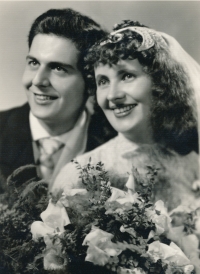I wondered how many people were suddenly invoking communism when not so long ago they were enthusiastically welcoming Americans in Pilsen

Download image
Karel Stoll was born on 11 June 1933 in Pilsen. Although the young family lived in Subcarpathian Russia at that time, his mother wished to give birth at home. The Stoll family permanently returned to their hometown when Karel was two years old. During World War II, he experienced the bombing of Pilsen and as a twelve-year-old boy he enthusiastically welcomed American soldiers during the liberation of the city. After the war, Karel Stoll joined the Kotva Scout Troop, with whom he laid the foundation of the monument to American soldiers in 1946. In the 1950s, he disagreed with the communist regime and as a student took part in protests in the centre of Pilsen against monetary reform. The communists expelled him from university because of this. However, he later returned to his studies and graduated from the Czech Technical University in Prague. In the 1970s, thanks to his knowledge of foreign languages, he began to travel to Western European countries as an expert on railway networks. In Germany, he established contacts with exiles from the Church and participated in the transportation and distribution of missals printed in Germany. In 1980 he moved with his family to Líbeznice. He and his wife Helena organized concerts in churches and in the mid-1980s established the tradition of concert of the Ryba Mass in the church in Líbeznice. At that time, he was already being followed by the state police without his knowledge. During the revolutionary period at the end of 1989, the witness worked as a driver for the Prague actors Jana Hlaváčová and Boris Rösner. He co-founded the Civic Forum in Líbeznice. After the revolution, he continued to work as an expert on railway transport. In 2022 he lived in a house in Líbeznice.
















